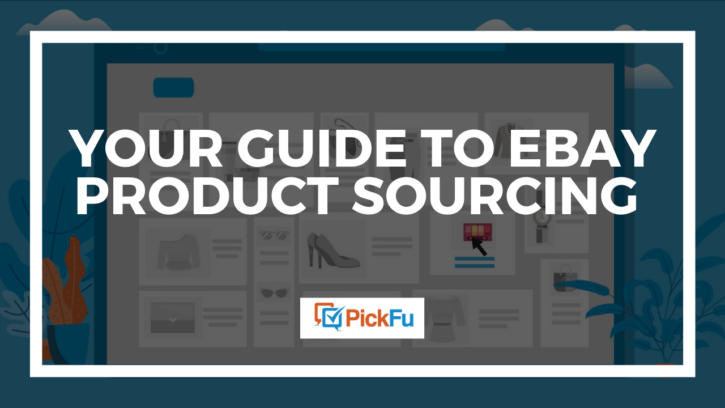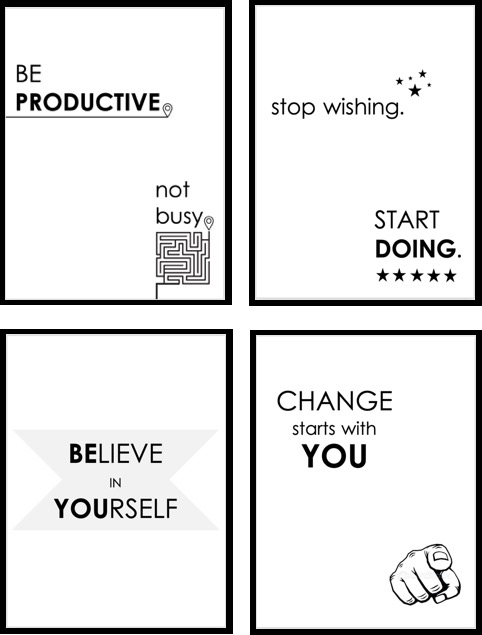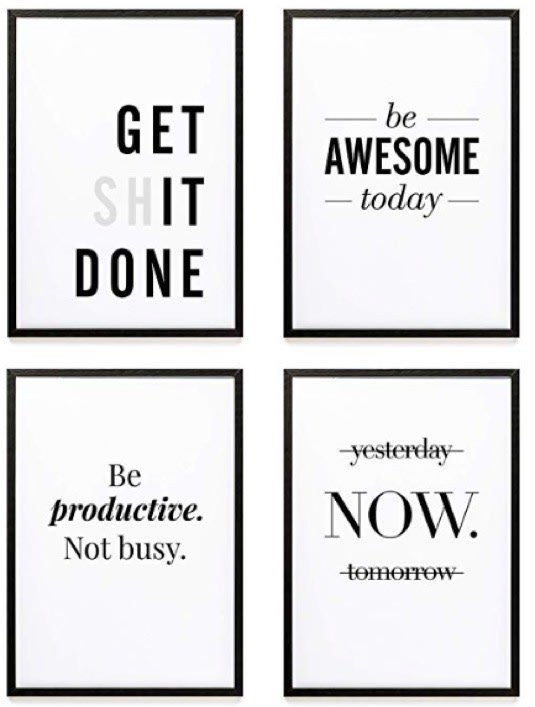You’ve decided to plunge into the world of e-commerce, but there’s a problem: you aren’t sure how to get started with eBay product sourcing.
You might already be familiar with Amazon, but instead of sticking to items that can compete with Amazon’s strong gadget, name-brand toy, and book market, you want to sell items that are a little more obscure: sports cards, first-edition books, comics, or used electronics.
While Amazon also sells products like this, its storefront is focused on new, useful items.
eBay, on the other hand, devotes energy to both the obscure and the novel.
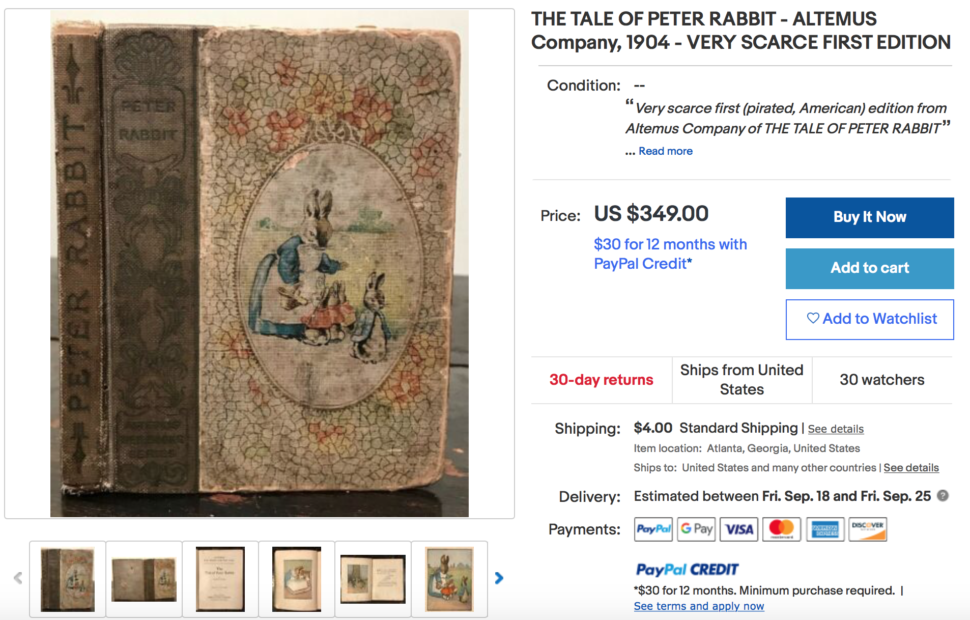
Source: eBay
If you’re the type of seller who would open a brick-and-mortar antique shop or comic store instead of a snazzy new-toys-only store, eBay is for you.
But how do you find products to sell? Where do you begin with eBay product sourcing?
We’ll tell you everything you need to know to get started.
Where do you source products on eBay?
There are four ways to find products to sell on eBay. We’ll cover each one in detail.
Arbitrage
One of the easiest ways to source eBay products is through retail arbitrage. This method entails buying discounted products online or in brick-and-mortar stores and then selling them on eBay at a higher price.
It’s a low-risk way to earn a profit. Arbitrage is not only legal,
To succeed at arbitrage, define the niche of products that you’d like to sell on eBay. It’s helpful to pick a category you know a lot about, or at least something you’re interested in.
A mom, for example, could focus on selling baby and kid items on eBay. She may need to look no further than her own basement to find a whole bunch of gently used clothes and toys to sell. (Am I speaking from experience here? Maybe. Just maybe.)
She could also shop around at secondhand stores, discount stores, and consignment events to find products to sell.
If you love books, focus on buying used and discounted books to sell on eBay. If you love motors and engines, source parts to resell on eBay’s thriving motors market.
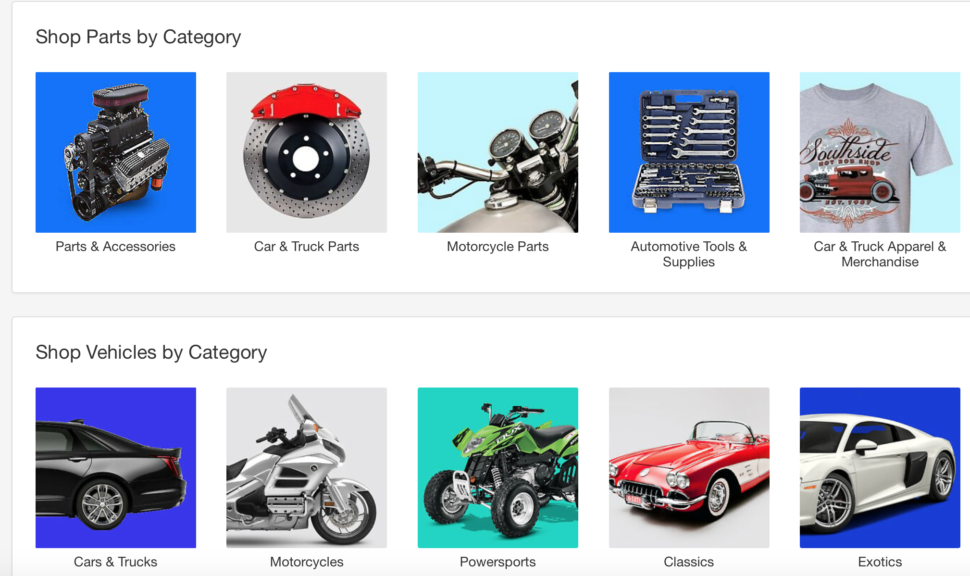
Dropshipping
Dropshipping is an ideal way to source eBay products if you don’t have much space to store inventory yourself. This method keeps your startup and operating costs low.
To dropship, you find a supplier in your niche and list its products on your eBay account or storefront. When one of your customers purchases the product from your listing, you let the supplier know. At this point, you pay for the product, usually at a discounted rate.
The company then uses a third-party shipping company to ship the product to your customer.

In addition to saving you storage space, a benefit of dropshipping is that you don’t have to pay for the products until you sell them.
But there are drawbacks, too. Since you’re selling items from a third-party supplier, you don’t get the full profit from a sale. And even though you don’t have to take care of shipping, you still have to deal with customer service and returns.
So if your product arrives
Plus, dropshipped items aren’t unique. Other eBay sellers can buy and sell the exact same items, and they may have the resources to list them for a lower price than you can.
You also have to take care to source items from legitimate suppliers. Scammers with fake brand-name products are everywhere.
To learn more about dropshipping, see this article from BigCommerce.
Is dropshipping on eBay legal?
The short answer? Yes.
But it’s a little more complicated than that.
In eBay’s earlier days, sellers would buy discounted products from sites like Amazon and resell them on eBay.
eBay no longer allows this. In order to legally dropship on eBay, you must source your products from a supplier that does not offer direct shipping to customers.
If you break this rule, you risk an assortment of consequences, the most serious being account suspension.
eBay also makes it clear that you, not the supplier, are responsible for getting the product delivered on time and in good shape.
Here’s a full explanation of eBay’s dropshipping policy.
Wholesale
If you have the resources to pay for storage space and management, consider sourcing your products from a wholesale manufacturer.
A wholesaler will have purchased a large amount of products at a discount from the manufacturer.
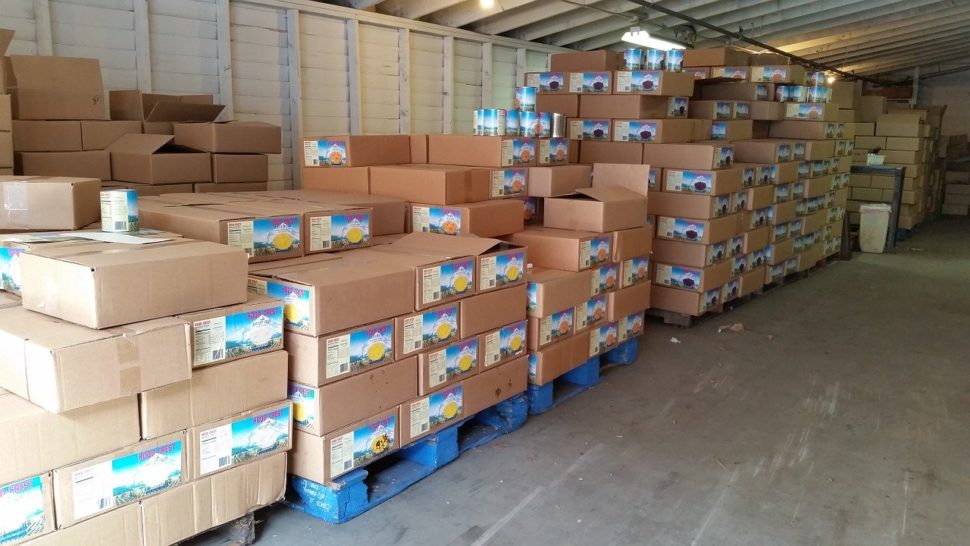
For example, say you want to sell name-brand toy cars that typically retail at $15 each.
If you don’t go through a wholesaler, you might be able to negotiate a purchasing price of $12 per car from the manufacturer if you buy 75 cars every month.
You’d then earn $3 in profit per car.
But say you purchase the same products from a wholesaler, who purchased 40,000 cars at a much lower price of $5 per car.
They sell 75 cars to you at $10 per car, netting them a profit of $5 per car. You then get the same profit when you sell the cars on eBay at $15 each.
Of course, there’s no guarantee that the products will sell. And you need to make sure the items coming from your wholesaler are high-quality. While you might be able to find wholesale products from liquidation or estate sales, they might not be top-notch.
For more information on sourcing wholesale items, check out this article from The Balance Small Business.
White label and private label
White labeling occurs when a manufacturer sells generic products — like deodorant — to a brand, who then labels the product with its own brand name and not the
For example, the Kirkland brand batteries that you find at Costco are white-labeled Duracell batteries. They cost less than the Duracell brand, but they’re the same thing.
A lot of store brands use white-labeled products from well-known manufacturers and then sell them at a lower price under their own brand.
With a bit of work, you can turn white labeling into a profitable way to sell products on eBay.
For more tips on white labeling for your eBay business, check out this article.
Private labeling is a lot like white labeling, but instead of sourcing generic products from a manufacturer to
You can find out how to get started with private label selling on eBay here.
For tips on how to find suppliers for both white- and private-label products, check out this article from A Better Lemonade Stand.
How much money can I make by sourcing products on eBay?
You can make a decent income by sourcing products on eBay. But your success depends on the choices you make and the work you’re willing to put into your eBay business.
If you just want to sell products on eBay as a side gig and dig deep into a niche like comics or video games, you can.
But earning a somewhat-reliable income takes a bit more consideration.
What are some of the best selling products on eBay?
The first thing you should do is find out what shoppers are buying.
For example, you can check out this article from CrazyLister to find out what the top-selling items were on eBay during 2020 and work from there.
This infographic from Title Builder presents some important conclusions:
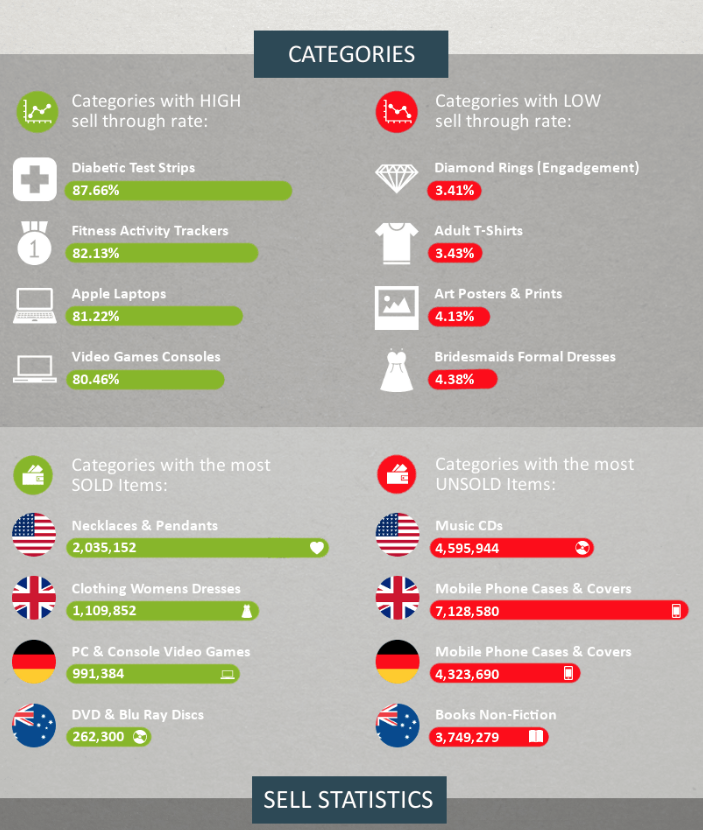
You may not be crazy in love with diabetic test strips, but people buy them on eBay. Who knew? Maybe it’s time to get into the healthcare supplies niche.
If you’re into gaming, you’re in luck: video game consoles and video games also sell well on eBay.
Pay attention to the international marketplace represented in your research, though. In Australia, the DVD and Blu-Ray category sells the most items. But in the United States, the category with the most sales is Necklaces & Pendants.
It’s all about what your audience wants, so if your audience is in the US and you’re interested in selling both affordable jewelry and movies, you may want to focus on sourcing and selling jewelry.
Or, you can focus on sourcing eBay products that sell fewer items at higher prices.
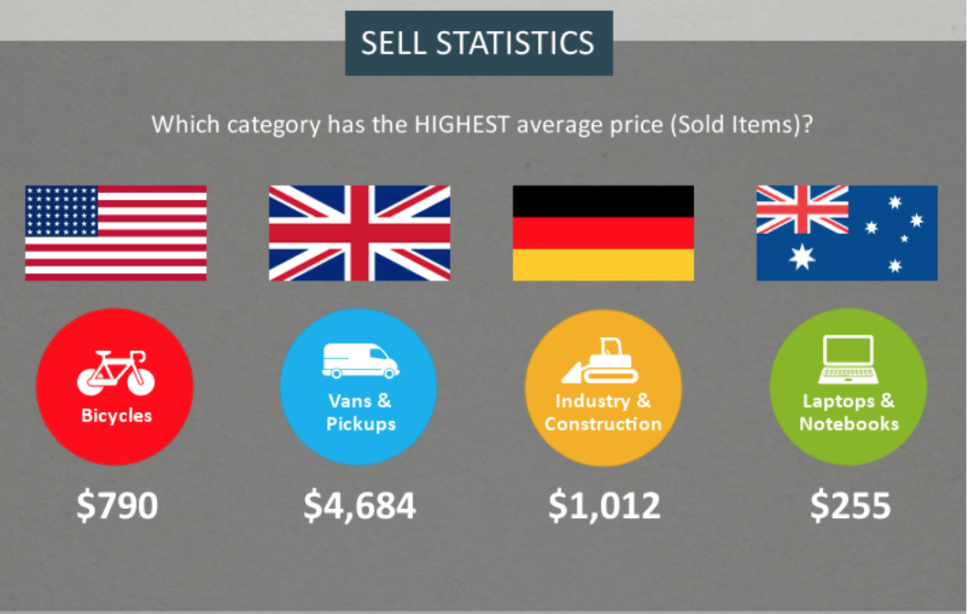
If you don’t like spending time sourcing and branding lots of high-volume products with low prices, try sourcing low-volume, high-priced products like bicycles, if you live in the US, or vans and pickups if you’re in the UK.
By knowing what’s actually selling on eBay in any given year or set of months, you’re able to choose a profitable niche.
For more tips on sourcing profitab
Estimating the cost of goods sold for eBay product sourcing
Once you’ve got a niche and have decided which method or methods of sourcing you’ll use, it’s time to figure out your finances.
How much will your goods cost to purchase? This figure is known as the Cost of Goods Sold (COGS).
What is your projected revenue, or net sales?
Is the resulting gross profit margin worth working for?
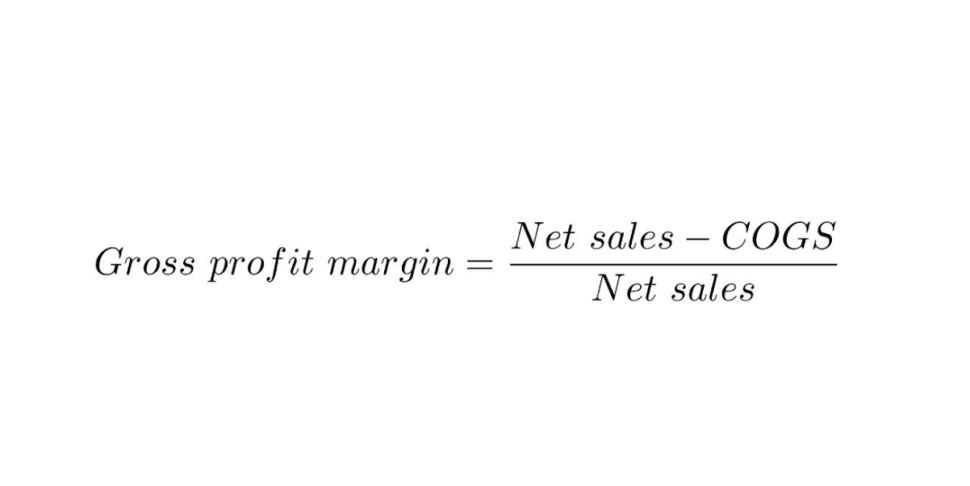
If the answer is yes, it’s time to start sourcing eBay products!
How to use PickFu to choose products to sell on eBay
PickFu is an excellent resource to help you with eBay product sourcing.
To get started, gather photos or graphics from your manufacturer or supplier and test the images with an audience of PickFu respondents.
Choose from PickFu’s extensive selection of audience traits to make sure the respondent pool matches your target audience.
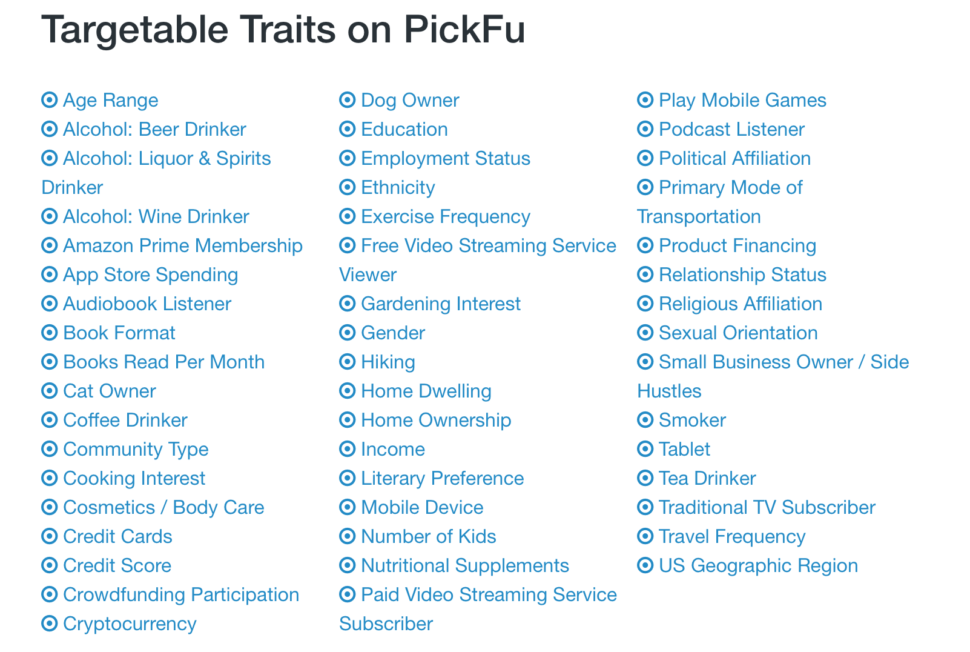
E-commerce sellers often use PickFu to help them decide which products to source for eBay.
Case study #1: inspirational posters
One e-commerce seller used PickFu to decide which set of framed inspirational posters to sell online.
Option A’s posters included graphics, while Option B’s didn’t. Both were similar in style otherwise.
Option A won by a margin of 54% to Option B’s 46%. Some respondents chose Option A because they didn’t like the use of profanity in Option B:
- “This choice has no profanity. The font and graphics are professionally done and respectful in nature.”
- “I would want the ones without vulgar words on them!”
- “I would choose this option because the alternative used profanity and would be inappropriate to hang in a professional environment.”
Others respondents, on the other hand, liked the profanity:
- “[Option] B is slightly more aggressive and vulgar but is more direct and likely to be motivational.”
- “I will choose profanity every time…it’s just my humor.”
- “I like the “Get sh*t done” wall art. Is humorous, what everyone needs once in a while in their life.”
If the sellers knows their audience would appreciate the profanity, then they can feel relatively comfortable in choosing that set of posters. But if they aren’t sure, it’s best to stick with the safe set (which, respondents noted, had adorable designs).
Case study #2: stylish laundry hampers
In another poll, a seller wanted to know which laundry hamper looked more premium and high-end.
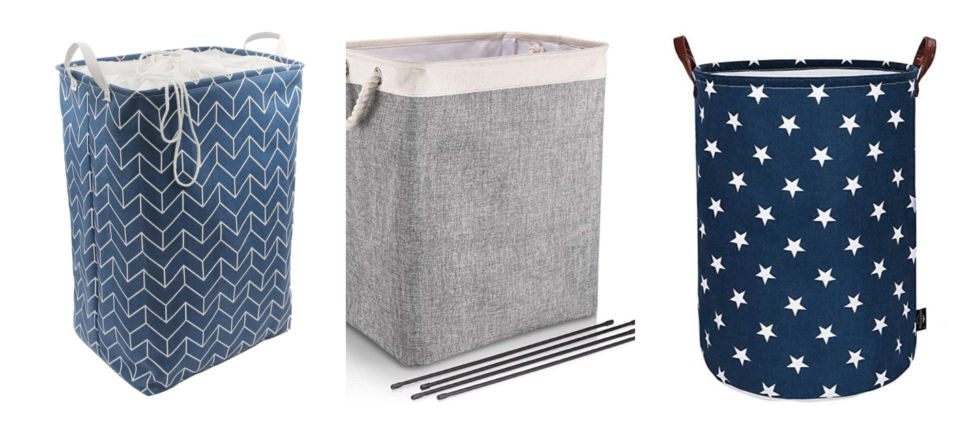
Option B, the gray laundry hamper, won the most votes by a large margin even though its design isn’t patterned like the other two.
It turns out that the gray color and thick handles stood out as understated, premium-quality features:
- “The gray one … looks by far the most upscale to me; it is elegant, I like the rope handle and the white border at the top, it would be a clear first choice for me, and it looks like the most upscale one.”
- “Option B is my favorite by far because the material looks to be of a higher quality, and the rope handles are thicker. Option A is a downgrade in quality and doesn’t look like to be too supportive of heavy loads. The same can be said for Option C – the material appears to not be that good quality-wise, and the handles don’t look like they would last long.”
- “In my opinion, Option B looks the most ‘premium’ mainly because of the handles; they appear to be a thick rope, which is nice and makes me think that the product is sturdy. Option C has leather handles which are also nice, but I just think that Option B’s presentation in addition to its handles is the most expensive-looking. As for Option A, I like the design of it, but I don’t think it looks ‘premium,’ it reminds me of something I could find at Walmart whenever I needed it.”
As you can tell, PickFu respondents give honest feedback and detailed comments on why a product is or is not something they would buy.
This is invaluable insight for your journey into the world of eBay product sourcing.
Use PickFu in your eBay product sourcing strategy
It’s easy to take eBay product ideas, designs, and photos to PickFu to find out which ones appeal to your target audience.
To help your eBay business thrive, create your first poll on PickFu today.
